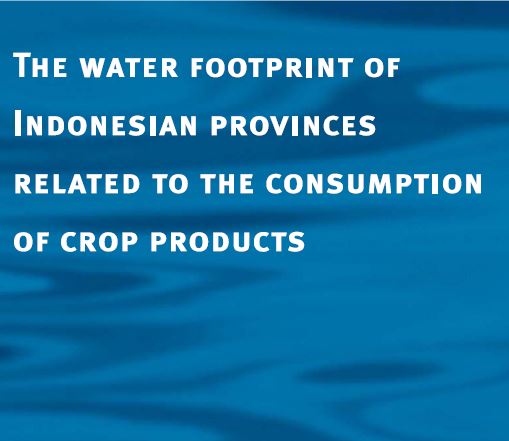The Water Footprint of Indonesia Provinces Related to the Consumption of Crop Products. Value of Water
The study follows the method for calculating virtual water flows and water footprints as developed by Hoekstra and Chapagain (2007; 2008). The first step in the method is to calculate the water footprint of crops, which depends on crop water requirements, rainfall and irrigation. Crop water requirements depend on crop type and climate and can be supplied from either rainfall or irrigation water. The amount of rainwater that contributes to the evapotranspiration is called the green water use and will determine the green component of the water footprint of a crop. The amount of irrigation water that contributes to the evapotranspiration is called the blue water use and will determine the blue component of the water footprint of a crop. The last component that contributes to the water footprint of a crop is the grey component. This is the volume of water polluted, quantified as the amount of water required to dilute pollutants to an acceptable level. The second step is to calculate interprovincial virtual water flows, which result from crop trade between provinces. The flow will occur from provinces with surpluses to provinces with deficits. A surplus occurs when the consumption of a crop in a province is lower than the production of it. A deficit occurs when the consumption of a crop is higher than the production in a province. Finally, the water footprint of a province related to the consumption of crop products is the total amount of water used for the production of these products. This water can originate either from internal or external water resources. Data for the calculation have been taken mainly for the years 2000 till 2004.
